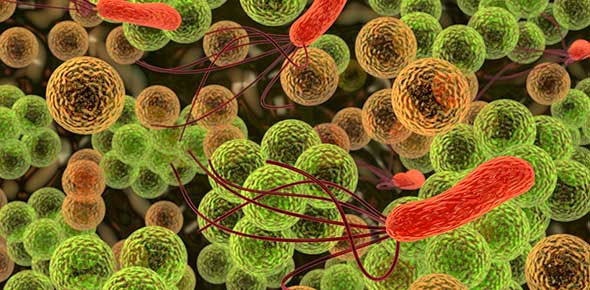Related Flashcards
Related Topics
Cards In This Set
| Front | Back |
|
Biotechnology
|
The use of technology to control biological processes as a means of meeting societal needs
|
|
Transgenic organism
|
An organism whose genome has stably incorporated one or more genes from another species
|
|
Restriction enzymes
|
Enzymes that occur naturally in bacteria and are used in biotechnology to cut DNA into desired fragments (in nature, bacteria use them to cut up the DNA of invading viruses); enabled scientists to cut genomes at particular places
|
|
Plasmids
|
Small DNA-bearing units of bacteria that lie outside their single chromosome; can replicate independently of the bacterial chromosome & can move into bacterial cells
|
|
Transformation
|
A cell's incorporation of genetic material from outside its boundary; some bacterial cells are naturally adept at transformation while others can be induced to perform it by means of chemical treatment
|
|
Recombinant DNA
|
Two or more segments of DNA that have been combined by humans into a sequence that does not exist in nature
|
|
Cloning vectors
|
Self-replicating agents that serve to transfer and replicate genetic material; the most common cloning vector (next to plasmids) is a type of virus that infects bacteria (a bacteriophage)
|
|
Clone
|
"to make an exact genetic copy of"
|
|
Reproductive cloning
|
Cloning intended to produce adult mammals of a defined genotype
|
|
Somatic cell nuclear transfer (SCNT)
|
A means of cloning mammals through fusion of one somatic (non-sex) cell with an egg cell whose nucleus has been removed (an "enucleated" egg cell)
|
|
Polymerase chain reaction (PCR)
|
A technique for quickly producing many copies of a specific segment of DNA; DNA, DNA nucleotides, DNA polymerase, & 2 DNA "primer" sequences (short sequences of single-stranded DNA that act as signals to DNA polymerase to start adding nucleotides)
|
|
Human genomes are filled with short sequences of DNA that are repeated over and over from _ to __ times
|
3; 50
|
|
Short tandem repeat (STR)
|
At a given location in the genome, one person will have one number of tandem repeats, while another person is likely to have a different number of repeats; the chances are small that 2 unrelated individuals will have an identical number of repeats at even one location in the genome
|
|
Commitment
|
A developmental process that results in cells with roles that are completely determined
|
|
Stem cells
|
Adult and embryonic cells that have a continuing capacity to produce more cells of their own type, along with at least one type of specialized daughter cell
|








